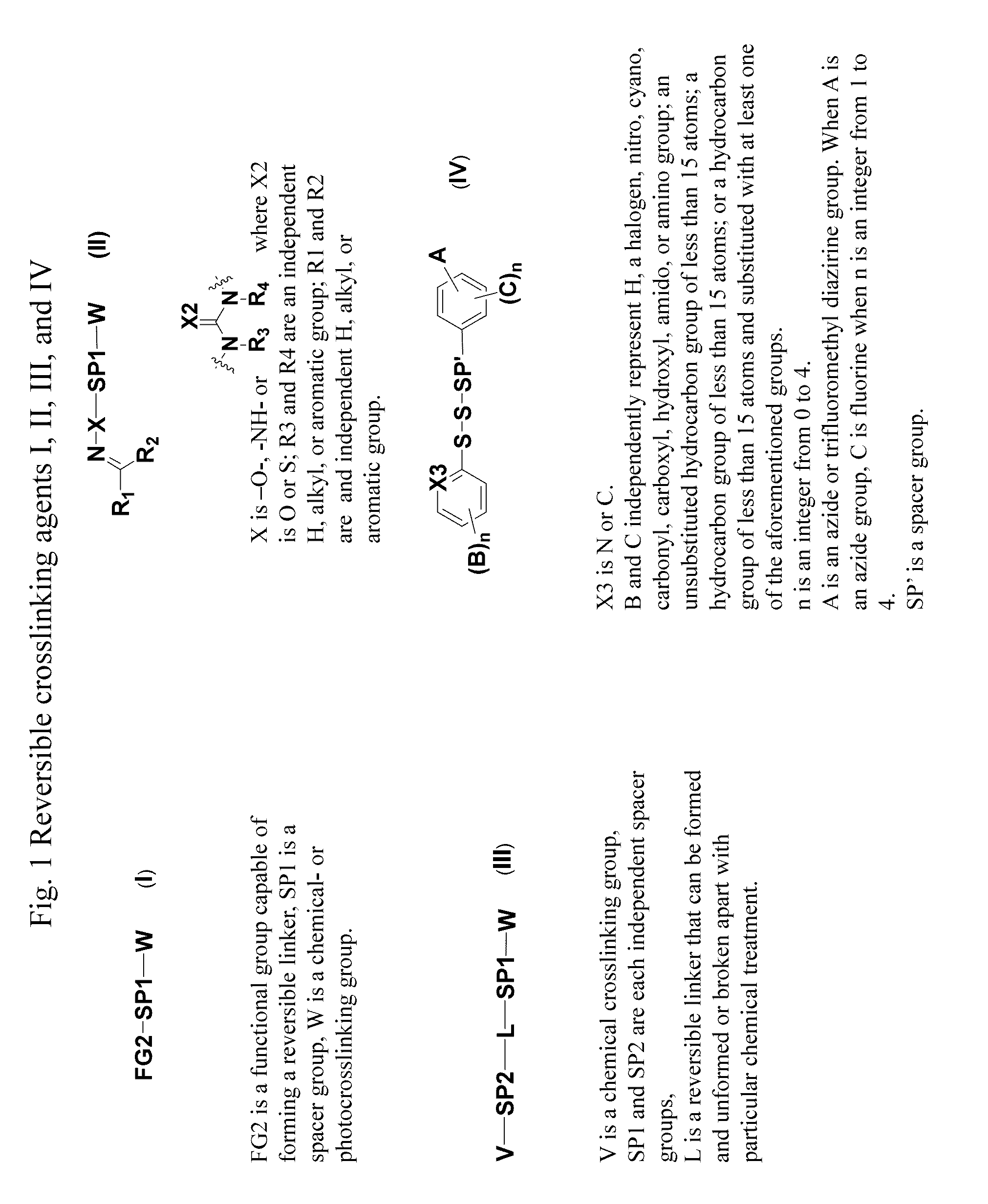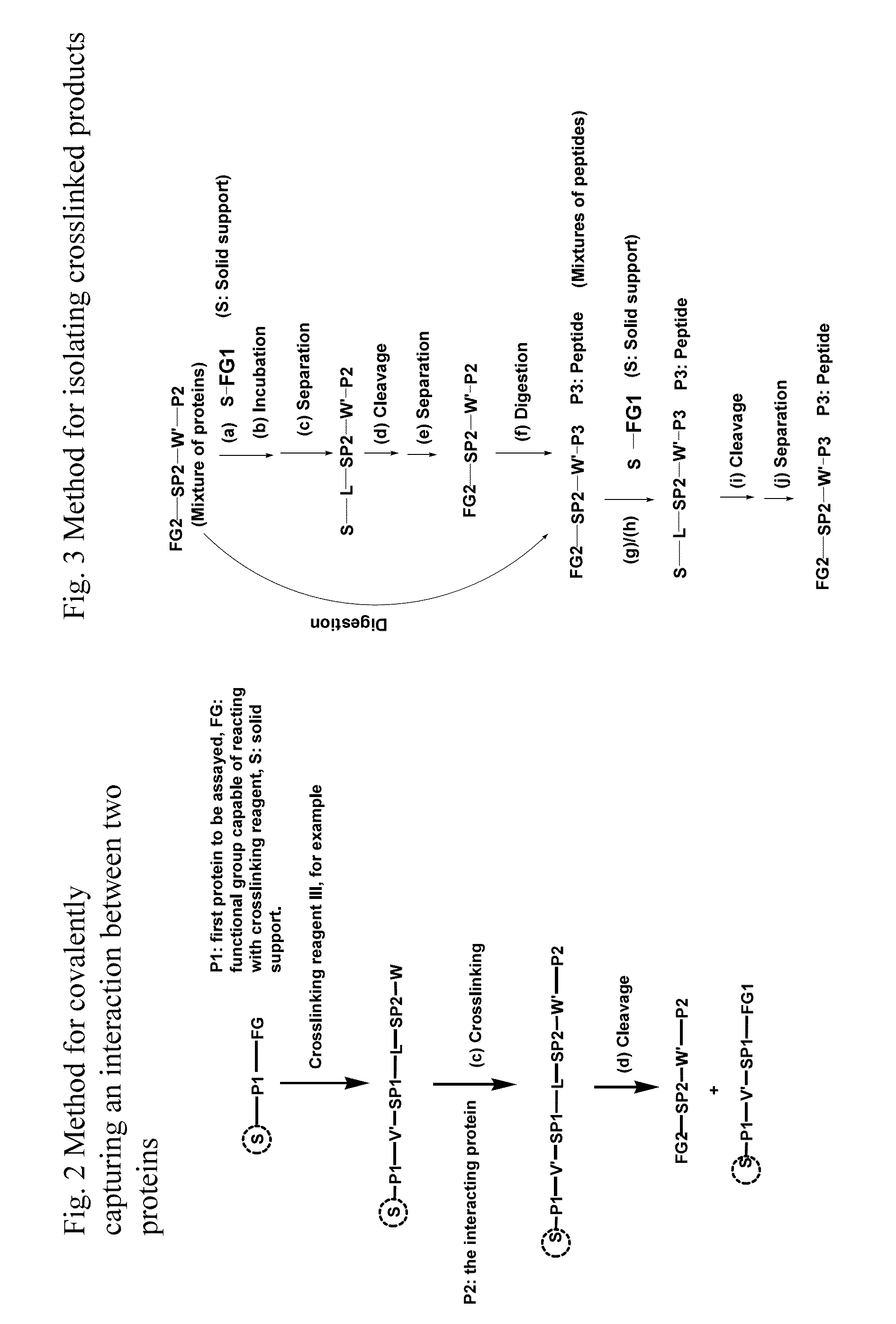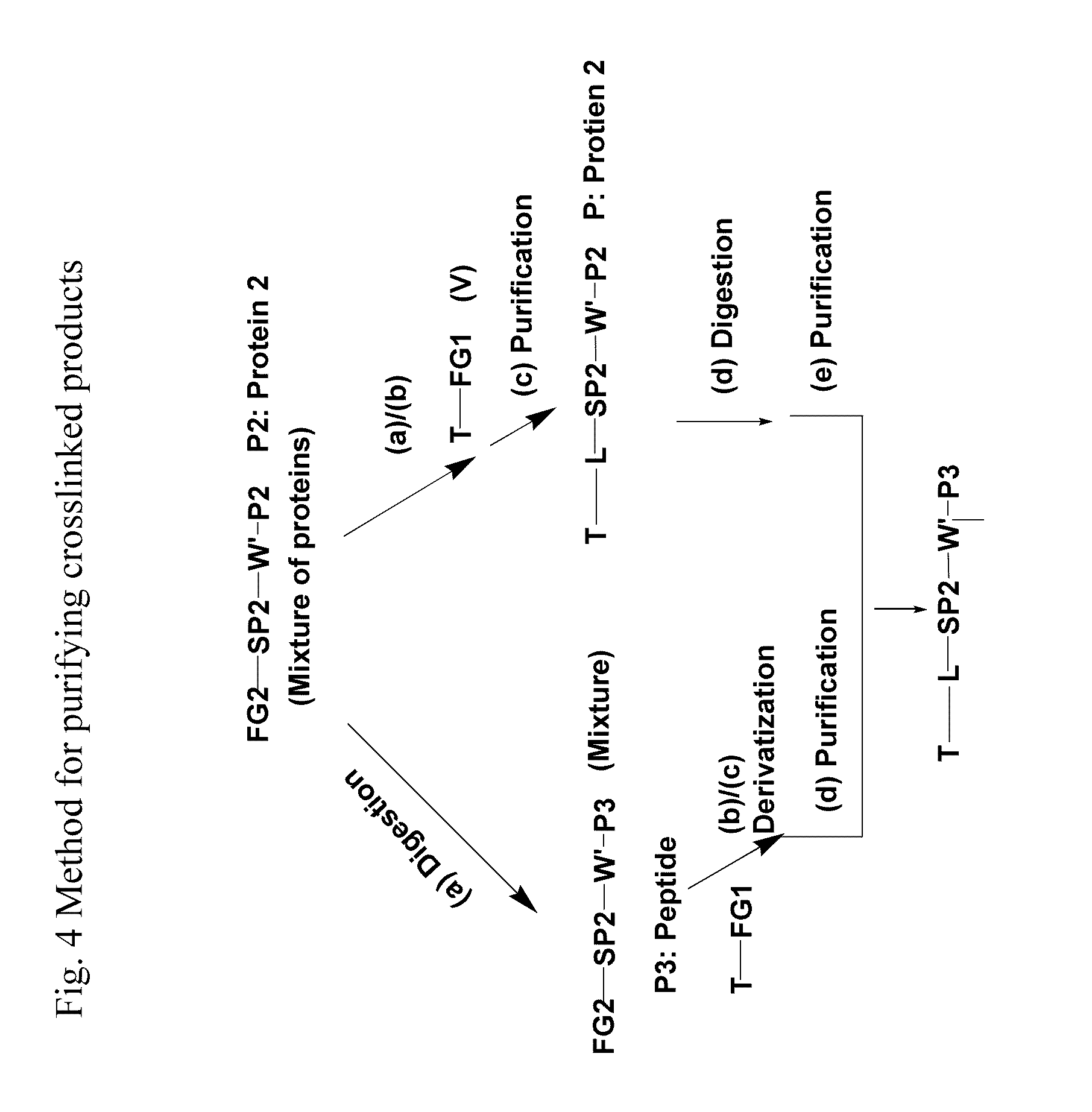Crosslinking reagents, methods, and compositions for studying protein-protein interactions
a protein-protein interaction and crosslinking technology, applied in the field of crosslinking reagents, methods and compositions, can solve the problems of low photocrosslinking efficiency, low data, and general techniques for elucidating the three-dimensional structure of complexes, such as x-ray and nmr, and achieve high specific labeling, no side products, and high photocrosslinking efficiency
- Summary
- Abstract
- Description
- Claims
- Application Information
AI Technical Summary
Benefits of technology
Problems solved by technology
Method used
Image
Examples
example 1
Synthesis of Cleavable Heterobifunctional Photocrosslinking Reagents Containing a Peptide Spacer and Reversible Oxime Bond (FIG. 10).
[0194]This example describes the synthetic routes to various lengths of photocrosslinking reagents containing a peptide spacer and cleavable oxime linker. Aminooxy functionality can be achieved by simply using an aminooxy resin during the solid phase peptide synthesis. Final cleavage of the crosslinking reagent by 95% TFA concomitantly &protects the aminooxy and provides the aminooxy-containing pcptidyl photocrosslinking reagent (d). The incorporation of a malcimide group into the crosslinking agent (e) allows the crosslinking reagent to react with sulfhydryl-containing proteins. The aminooxy group can also be capped by acetone, and the acetone can easily be exchanged with other aldehyde-containing proteins (f). Direct conjugation between photocrosslinking groups with an oxime linker obtains the shortest spacer. The addition of each amino acid adds up ...
example 2
Synthesis of Photocrosslinking Reagents Containing Ethylene Glycol and a Methylene Spacer
[0195]FIG. 11 describes the synthetic routes to trilluoromethyl phenyl diazirine containing various lengths of ethylene glycol or methylene linkers. Starting from the commercially available alkyl or ethylene glycol substituted benzene bromide, the trilluoromethyl phenyl diazirine analog can be synthesized following Nassal's published procedures (Nassal, M. Liebigs Ann Chem. 1983, 1510-1523).
example 3
Synthesis of Cleavable Oxime-Linked Photocrosslinking Reagents Containing Ethylene Glycol and a Methylene Spacer
[0196]The synthetic route to incorporate these trifluoromethyl phenyldiazirine compounds into oxime-link reagents is illustrated in FIG. 12.
PUM
| Property | Measurement | Unit |
|---|---|---|
| hydrophobic | aaaaa | aaaaa |
| structure | aaaaa | aaaaa |
| NMR | aaaaa | aaaaa |
Abstract
Description
Claims
Application Information
 Login to View More
Login to View More - R&D
- Intellectual Property
- Life Sciences
- Materials
- Tech Scout
- Unparalleled Data Quality
- Higher Quality Content
- 60% Fewer Hallucinations
Browse by: Latest US Patents, China's latest patents, Technical Efficacy Thesaurus, Application Domain, Technology Topic, Popular Technical Reports.
© 2025 PatSnap. All rights reserved.Legal|Privacy policy|Modern Slavery Act Transparency Statement|Sitemap|About US| Contact US: help@patsnap.com



